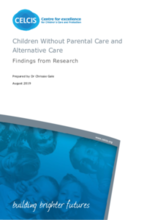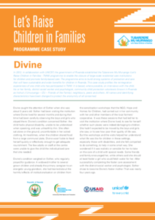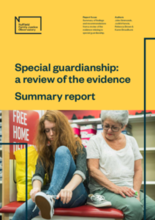Displaying 731 - 740 of 2214
The Stability Index is an annual measure of the stability of the lives of children in care in the UK. This report provides the national overview of the latest data analysis (relating to 2017/18) and findings.
The purpose of this short paper is to contribute evidence regarding the situation of children without parental care and suitability of alternative care.
In this case study, the authors address a critical component of health care delivery for a vulnerable population by describing a process of developing an information sharing system between health care and child welfare organizations in collaboration with child protection community partners in the US.
This case study profiles the reintegration experiences of one child who has participated in the Tubarerere Mu Muryango (Let’s Raise Children in Families - TMM) programme in Rwanda.
The primary aim of this study was to explore individual characteristics that could predict the quality of life and level of distress of foster care alumni.
This rapid evidence review is intended to contribute to the drafting of authoritative guidance to assist courts in the UK in making Special Guardianship Orders (SGOs) and to help inform decision-making by frontline practitioners.
This paper offers a brief consideration of the internal and external factors impacting children and young people who have become in conflict with the law.
Peer support is a form of support where foster parents connect formally with other foster parents with experience who can provide knowledge, emotional and practical help. The purpose of the present study was to identify what the needs are of foster parents in that peer support role from the views of peer support volunteers themselves.
This open access paper [from the Child & Family Social Work special issue on teenagers in foster care] reports on findings from the first study of LGBTQ young people in care in England and focuses on the nature of foster carers' experiences and perspectives on caring for LGBTQ young people.
This paper explores practice examples relating to young people's transitions from care to adulthood.




